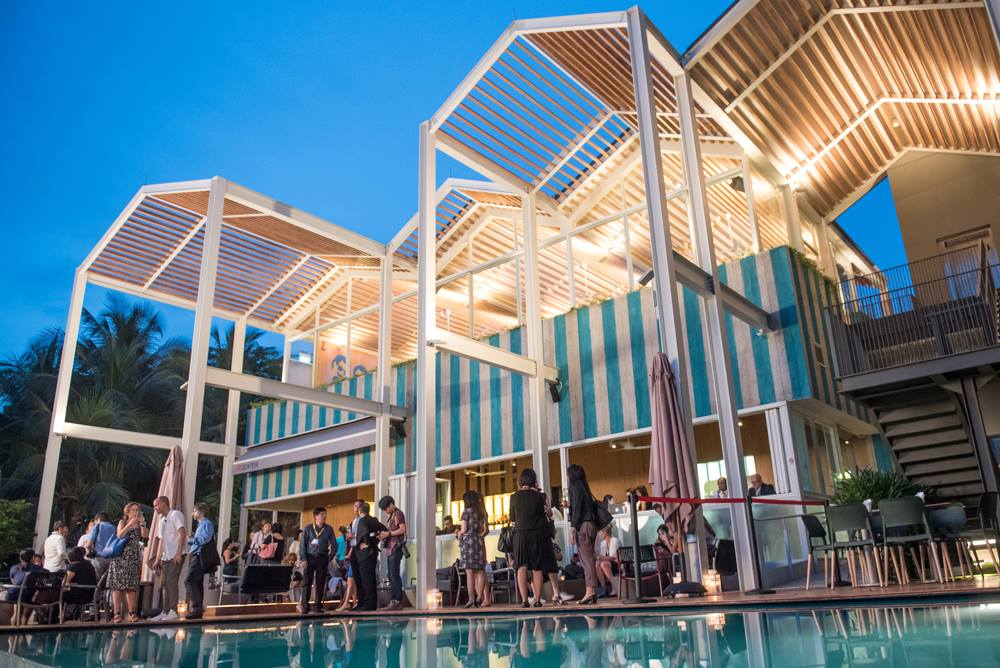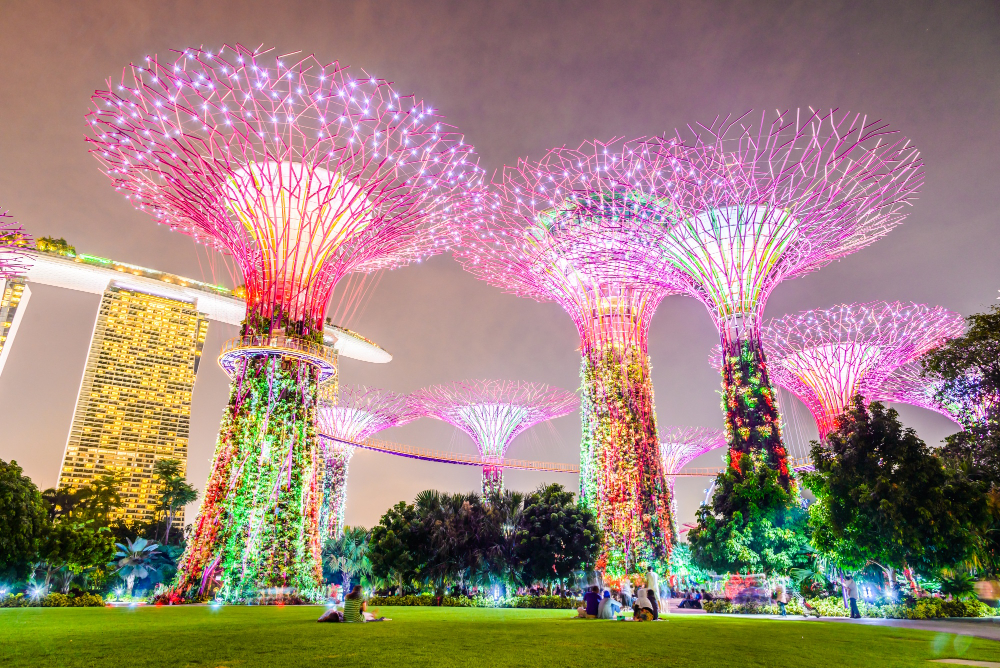Singapore Size: Singapore, a city-state in Southeast Asia, is renowned for its remarkable blend of cultural diversity, economic prosperity, and urban sophistication. While many may view it as a small dot on the world map, Singapore’s size belies its significance and allure. Here, we delve into ten surprising facts about Singapore’s size that showcase its unique attributes and contributions to the world stage.
Singapore Size: A Compact Nation with a Big Impact
At just 728.6 square kilometers (281.3 square miles), Singapore is one of the smallest countries in the world, comparable in size to cities like New York or London. Despite its compact size, Singapore has emerged as a global hub for finance, trade, and tourism. The nation’s strategic location along major shipping routes has made it a vital transit point for goods and services, illustrating how a small country can wield substantial influence in the global economy.
Singapore Size: A Dense Population
With a population of over 5.6 million people, Singapore is one of the most densely populated countries globally, with approximately 7,800 people per square kilometer. This high density has led to innovative urban planning solutions, such as the development of high-rise residential buildings, efficient public transportation systems, and green spaces to enhance the quality of life for its residents. The challenges and opportunities arising from such density have made Singapore a case study for urban development worldwide.
The Garden City Concept
Singapore is often referred to as the “Garden City,” a concept rooted in the country’s commitment to integrating nature into urban living. This initiative has transformed its landscape with lush greenery, parks, and gardens, covering around 47% of the island. The famous Gardens by the Bay and the Botanic Gardens are prime examples of how Singapore has harnessed its size to create beautiful, accessible natural spaces that contribute to the well-being of its residents and attract tourists from around the globe.
Land Reclamation Achievements
To combat its limited land area, Singapore has been at the forefront of land reclamation efforts, gaining approximately 130 square kilometers through this process since the 1960s. Notable reclaimed areas include the Marina Bay and Sentosa Island, which host luxurious resorts, commercial centers, and recreational facilities. This ambitious approach demonstrates Singapore’s innovative spirit and commitment to maximizing its available space while addressing the needs of its growing population.
Efficient Public Transport
Singapore’s size has facilitated the development of one of the world’s most efficient public transport systems. The Mass Rapid Transit (MRT) system spans over 230 kilometers (143 miles), connecting various neighborhoods and major attractions seamlessly. With an extensive network of buses and taxis complementing the MRT, getting around the city-state is convenient and affordable. This efficiency in public transport underscores Singapore’s commitment to sustainable urban mobility, reducing reliance on private vehicles and contributing to lower carbon emissions.
A Melting Pot of Cultures
Singapore’s compact size has fostered a unique cultural mosaic, blending diverse ethnicities, languages, and traditions. The country is home to significant Chinese, Malay, Indian, and Eurasian communities, each contributing to its rich cultural tapestry. Festivals like Chinese New Year, Hari Raya Puasa, and Deepavali are celebrated nationwide, showcasing the harmonious coexistence of various cultures. This cultural richness not only enhances Singapore’s social fabric but also attracts millions of tourists eager to experience its vibrant heritage.
An Architectural Wonderland
Despite its small size, Singapore boasts an impressive skyline characterized by modern architectural marvels. The Marina Bay Sands, Esplanade, and One Raffles Place are just a few examples of the city’s innovative designs. The juxtaposition of futuristic buildings alongside colonial-era structures, such as the Raffles Hotel, highlights Singapore’s architectural diversity. This unique blend of old and new has established Singapore as a global architectural destination, drawing enthusiasts and professionals alike.
A Leader in Sustainability
Singapore’s limited land and resources have prompted the nation to prioritize sustainability and environmental conservation. Initiatives like the Sustainable Singapore Blueprint aim to promote green living and reduce carbon footprints. The introduction of vertical gardens, solar energy solutions, and waste management systems reflects Singapore’s commitment to sustainable practices. This focus on sustainability serves as a model for other cities facing similar challenges, proving that size does not hinder the pursuit of ambitious environmental goals.
Limited Natural Resources
Being a small island nation, Singapore lacks significant natural resources, relying heavily on imports for water, energy, and food. The government has implemented various strategies to mitigate this limitation, such as investing in desalination plants and wastewater recycling technologies to secure a sustainable water supply. Additionally, initiatives like the 30 by 30 goal aim to produce 30% of the nutritional needs locally by 2030, showcasing Singapore’s determination to achieve food security despite its size constraints.
A Global Connectivity Hub
Singapore’s strategic location in Southeast Asia has made it a key connectivity hub for air and sea travel. Changi Airport, consistently ranked among the best airports globally, serves over 65 million passengers annually and connects to more than 380 cities worldwide. The Port of Singapore is one of the busiest ports, facilitating significant global trade. This connectivity is essential for maintaining Singapore’s economic growth and international relevance, emphasizing how a small size can lead to significant global interconnectivity.
Conclusion
Singapore Size: Singapore’s size may be small, but its impact on the global stage is anything but minor. The unique challenges and opportunities posed by its compactness have spurred innovation, sustainability, and cultural richness, setting a remarkable example for other nations. From its efficient public transport system to its commitment to environmental conservation, Singapore demonstrates that greatness can indeed come in small packages.
Whether you are a traveler eager to explore this vibrant city-state or a student of urban development, understanding Singapore’s size and its implications is essential to appreciating its achievements and aspirations. As the nation continues to evolve, it will undoubtedly remain a fascinating case study in how size can shape identity and influence global dynamics.
FAQs
1. What is the total area of Singapore?
Singapore covers approximately 728.6 square kilometers (281.3 square miles).
2. How densely populated is Singapore?
Singapore is one of the most densely populated countries, with around 7,800 people per square kilometer.
3. What initiatives has Singapore undertaken for sustainability?
Singapore has implemented various initiatives, including the Sustainable Singapore Blueprint, vertical gardens, solar energy solutions, and waste management systems.
4. How does Singapore’s public transport system work?
Singapore has an efficient public transport system, including the Mass Rapid Transit (MRT) network, buses, and taxis, making it easy to navigate the city-state.
5. Why is Singapore known as the “Garden City”?
Singapore is known as the “Garden City” due to its commitment to integrating nature into urban living, featuring parks, gardens, and green spaces throughout the city-state.
Also read: SG Travel: 10 MustVisit Attractions for FirstTime Visitors










